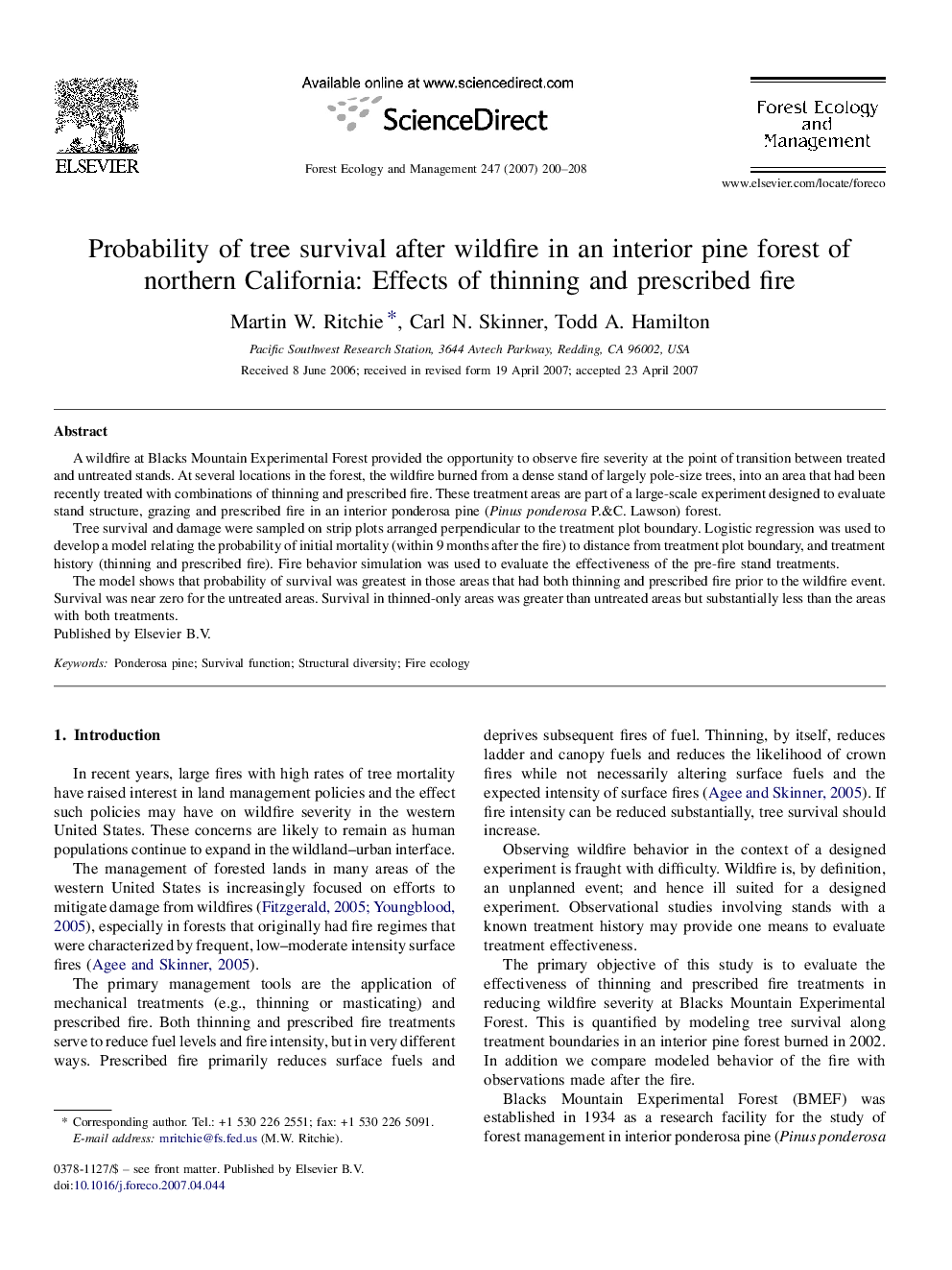| Article ID | Journal | Published Year | Pages | File Type |
|---|---|---|---|---|
| 90404 | Forest Ecology and Management | 2007 | 9 Pages |
A wildfire at Blacks Mountain Experimental Forest provided the opportunity to observe fire severity at the point of transition between treated and untreated stands. At several locations in the forest, the wildfire burned from a dense stand of largely pole-size trees, into an area that had been recently treated with combinations of thinning and prescribed fire. These treatment areas are part of a large-scale experiment designed to evaluate stand structure, grazing and prescribed fire in an interior ponderosa pine (Pinus ponderosa P.&C. Lawson) forest.Tree survival and damage were sampled on strip plots arranged perpendicular to the treatment plot boundary. Logistic regression was used to develop a model relating the probability of initial mortality (within 9 months after the fire) to distance from treatment plot boundary, and treatment history (thinning and prescribed fire). Fire behavior simulation was used to evaluate the effectiveness of the pre-fire stand treatments.The model shows that probability of survival was greatest in those areas that had both thinning and prescribed fire prior to the wildfire event. Survival was near zero for the untreated areas. Survival in thinned-only areas was greater than untreated areas but substantially less than the areas with both treatments.
